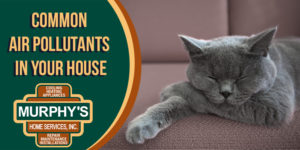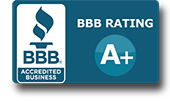
You think that the air you breathe inside your own home is healthy. After all, you keep your home and family clean, and your pets, too.
However, did you know that indoor air quality can be much worse than the air quality outside?
This is due to several common air pollutants within your walls that you might not have thought of. Most homes have many pollutants that cumulatively contribute to allergies and other breathing problems. Pollutants that release gas or particles into the air, combined with inadequate ventilation and moisture can add up to bad air.
Learn about common air pollutants in this informative guide.
Cleaning Products
Many common household products emit volatile organic compounds or VOCs. Spray-bottle household cleaners contain chemicals that emit VOCs, as do dry-cleaning fluids and aerosol sprays.
As an alternative, use natural cleaning products, such as white vinegar, baking soda, and plain water. Avoid aerosols altogether, as these are hazardous to the ozone outside as well. If you can hand wash your delicate clothing as opposed to dry cleaning, do so.
Your Pets
Pets contribute to indoor air pollution by their dander or dead skin particles. Due to their structure, pet dander pieces can linger in the air and on fabric for longer periods.
Many people have allergic reactions to pet dander, and if yours is severe, you should not have a furry pet at all.
If your allergies can be managed, keep your home free from pet hair as much as possible. Bathe your pet often, keep them off furniture and out of the bed, and invest in an air purifier.
Synthetic Air Fresheners and Candles
Solid or spray air fresheners contain loads of chemicals, and non-beeswax candles contain particles that get dispersed into the air.
For fresher indoor air, run ceiling and other fans from time to time, and open your windows periodically for short periods.
Inadequate Ventilation
Gas appliances produce carbon dioxide, carbon monoxide, and other vapors. If an appliance is not vented properly to the outside, or if the air pressure around a non-sealed gas appliance is low, these vapors can enter the house.
Carbon monoxide (CO) is a danger because it is colorless, odorless, difficult to detect, and can be fatal. Auto exhaust from attached garages can also be a source of this harmful gas.
Consult with an experienced air conditioning provider to determine what steps to take to optimize the ventilation throughout your home.
Excess or Inadequate Moisture
Moisture is one of the least recognized indoor pollutants, and it can wreak havoc on home health as well as human health.
Too much moisture, like water that enters the home via a leak or humid air, can cause mold and mildew. Too little moisture, which is common when it is very cold outside, can cause overly dry skin, static electricity, and an increased chance of catching a cold.
A well-performing air conditioning system can keep the humidity in your home at the proper level.
Keep Common Air Pollutants to a Minimum
The good news is that you can manage these common air pollutants. Using natural products, keep pet dander in check, and maintaining your air conditioning will help keep your indoor air quality high.
If you live in northwest Florida, contact us for all your air conditioning, heating, and appliance repair needs. We will help you keep the air in your indoor air clean.








